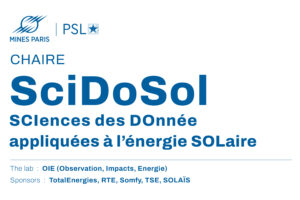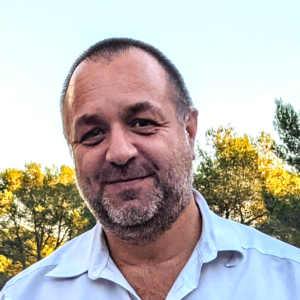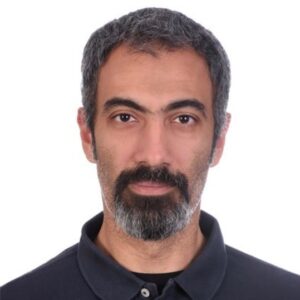Chaire SciDoSol « SCIences des DOnnées appliquées à l’énergie SOLaire »
The SciDoSol chair is dedicated to data science applied to Earth observation data and solar energy for the energy transition.

Center :
OIE (Observation, Impacts, Energie) de Mines Paris-PSL
Sponsors :

Project lead :
Philippe Blanc, Professor at the centre of research OIE (Observation, Impacts, Energie) at Mines Paris-PSL

The chair
The aim of the Scidosol Chair is to meet the needs and challenges of characterising, forecasting and exploiting solar resources as part of the energy transition.
To this end, it is exploiting large volumes of highly diverse data from Earth observation, while calling on the most advanced and effective data science methodologies and techniques.
The three pillars of SciDoSol are :
- open scientific research
- transfer to industry and society
- training
SciDoSol was officially inaugurated in March 2023 by Mines Paris- PSL, its Foundation and its sponsors.
To meet the needs and challenges of characterizing, exploiting and forecasting solar energy resources in the short, medium and long term, the Chair is developing four axes:
- Area 1: Improving methods for estimating and forecasting solar resources
- Area 2: Better characterize the spatio-temporal variability of the renewable resource
- Axis 3: Develop and analyze new uses based on the mastery of solar radiation data
- Axis 4: Promote the use of in-situ measurements and participate in the development of new instrumentation.
To achieve these objectives, the SciDoSol Chair relies on the exploitation of vast volumes of varied data from Earth Observation (in-situ sensors, satellites, digital meteorological models, etc.), and in particular from the European Copernicus program. It also mobilizes the most innovative and effective data science methodologies and techniques.
Context
Renewable energies (RE) are already playing a part in the energy transition, gradually taking on a major role in countries’ energy mixes. The development of renewable energies is fully in line with the sustainable development goals (SDGs) adopted in 2015 by the United Nations General Assembly, including:
Goal 7 for clean and affordable energy; Goal 9 for resilient infrastructure and sustainable, innovative industry; Goal 11 for sustainable cities; Objective 13 for the fight against climate change;
Among these renewable energies, solar radiation represents the Earth’s most important source of energy, with over 175 million GW at any given moment at the top of its atmosphere. It is also the main driving force or primary source of most meteorological and atmospheric phenomena, and therefore of most renewable energies. There are several ways of converting this solar energy, including thermal, concentrated thermodynamic and photovoltaic (PV). Among the 100 most effective actions to combat climate change identified by the Drawdown collective[1], the development of ground-mounted PV power plants is ranked 8th overall, and 2nd among energy production solutions. Similarly, rooftop PV systems in urban environments are ranked 10th (3rd), while concentrated thermodynamic and solar thermal systems are ranked 25th (7th) and 41st (11th) respectively.
Photovoltaic systems in particular have been booming for some years now, thanks in part to their constantly decreasing costs[2] and their versatility, enabling, for example, centralized, decentralized or isolated production, with installed capacities ranging from a few hundred watts to several hundred megawatts. In 2018, installed photovoltaic capacity worldwide stood at around 480 GWp, and the International Energy Agency (IEA) predicts that this capacity will more than double within the next five years[3].
Solar energy can also be harnessed to optimize energy efficiency, for example by integrating passive heat or light gain into building control systems.
However, the massive integration of solar energy into global energy use and supply requires a very detailed understanding of its spatial and temporal patterns of variation. Indeed, optimal use of this resource requires taking into account and anticipating both spatial and temporal fluctuations resulting from complex meteorological and climatological phenomena. A better understanding of the solar resource and approaches to its characterization and accurate forecasting are fundamental to providing academic and operational answers to these challenges. These improvements are played out at different spatial scales, from sub-metric urban scales to the kilometre-scale of a region or country. They are also played out on different temporal scales, from long-term historical to sub-hourly, daily, seasonal and even climatological.

The program
SciDoSol’s three pillars – research, transfer to industry and society, and training – are based on the following actions:
- High-level international academic production.
- Four to six doctoral theses, one post-doctoral student on the way to a Habilitation à Diriger des Recherches (HDR).
- Knowledge transfer, with the possibility of rapid commercialization of research results.
- The sharing of scientific and technical results, and regular exchanges with the French scientific and industrial communities concerned (workshops, webinars, etc.).
- Involvement in the training of engineering students at MINES Paris-PSL, with teaching projects and three- to six-month research internships.
- Ongoing training courses on solar radiation and its exploitation for young recruits from academic institutions and industry.
Events
SOLAR WINTER SCHOOL 2025
Courses, conferences, practical workshops and networking
The 3rd edition of the Solar Winter School will take place from 10 to 14 March 2025
DISCOVER
MIG SOLAIRE 2024
General engineering professions (MIG)
At the heart of tomorrow’s technological, economic and environmental challenges
UNDERSOLAR 2024
Engineering project
Training tomorrow’s engineers in sustainable practices
Project lead :

Philippe Blanc is currently Director of Research and Head of the Energy and Processes Department (DEP) at Mines Paris-PSL and Head of the Energy and Processes Department, DIRENS/Project Leader for the PSL I-BE3 Bachelor of Engineering.
After spending eight years in an R&D department at Thales Alenia Space working on very high-resolution optical satellite image processing, he has been contributing to research on renewable resource estimation at the Observation, Impacts, Energy (O.I.E) research centre at Mines Paris-PSL in Sophia Antipolis since 2007. More specifically, he works on modelling, estimating and forecasting solar energy resources, using different sources of Earth observation (satellites, numerical models, in situ measurements). He also teaches advanced signal and image processing and machine learning techniques in the civil engineering programme at Mines Paris.
The Team

Dr. Yehia EISSA joined the SciDoSol Chair in June 2024 as a full-time researcher. He is an expert in solar energy with extensive experience in academia, notably as a Postdoctoral Researcher and Assistant Professor. His research focuses on understanding solar energy resources in various environments, using advanced modelling and data analysis techniques, to support the transition to sustainable energy solutions.
News from the chair
MIG 2024 :
Student engineers from Mines Paris – PSL conquer solar mobility with the Vhélio
UNDERSOLAR 2024 :
[LOW-TECH] UNDERSOLAR engineering project: a solar furnace for the Biot glassworks
SWS Promotion :
An immersive week to master solar energy: 3 questions to Philippe Blanc
NEWSLETTER
A concrete overview of our team’s progress, key projects and current collaborations:

